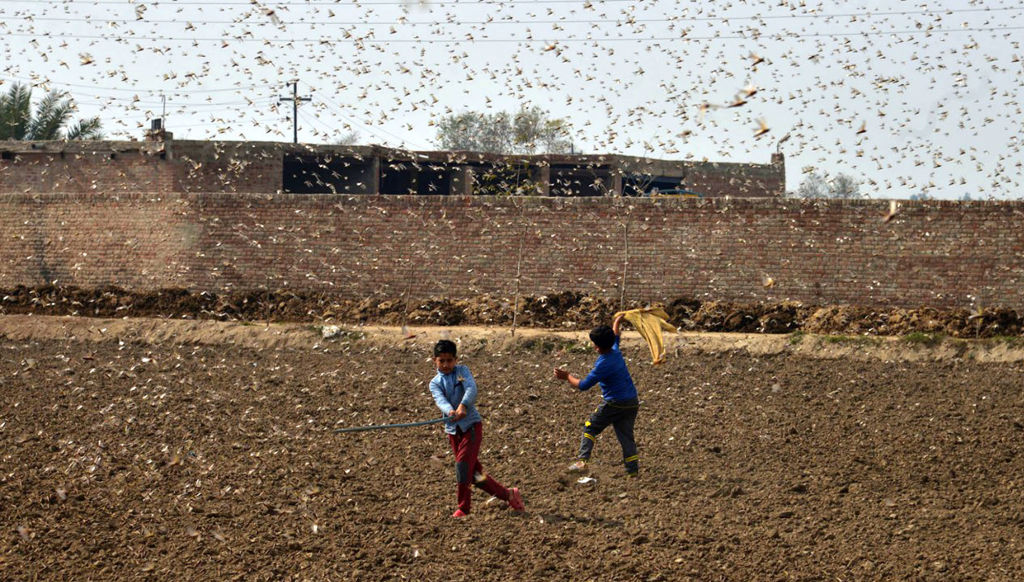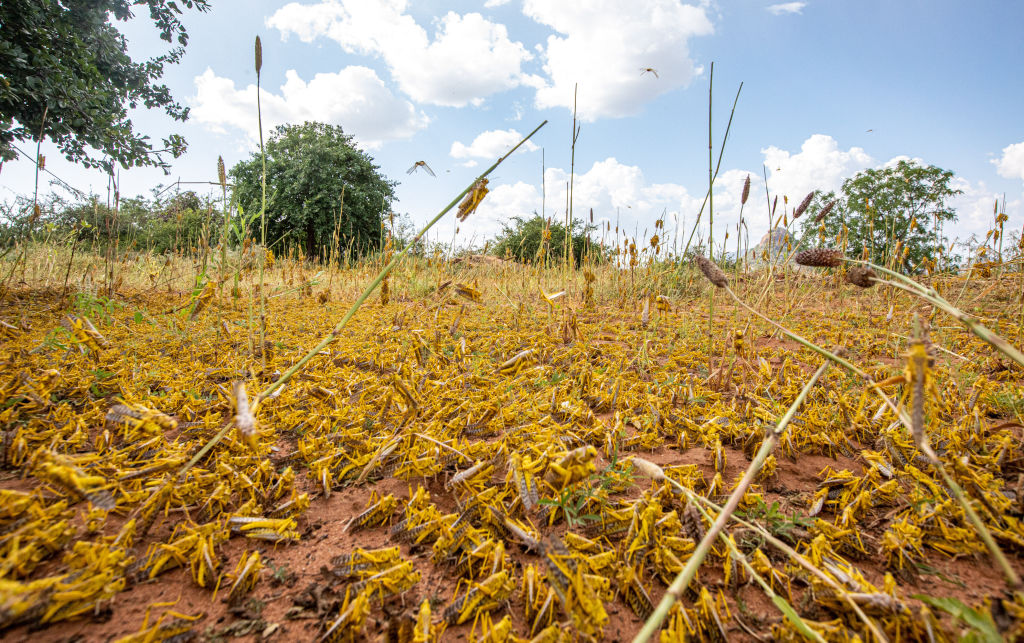During the coronavirus pandemic, there’s another plague happening: swarms of hungry locusts.

The species of grasshopper have a big appetite for teff, wheat and sorghum, Vox reports, and as they sweep across parts of Africa, South Asia and the Middle East, they’re threatening famine while these areas continue to fight against the highly contagious respiratory virus.
The threat is so serious that the World Bank has approved a record-breaking $500 million in grants and low-interest loans to battle the swarms. According to Reuters, the hardest-hit countries — Djibouti, Ethiopia, Kenya and Uganda — will receive $160 million right away.
Photos show skylines and fields full of clouds of the flying locusts. In some images, children can be seen swatting at them. In another, officials spray insecticide on plants in hopes of protecting them from being eaten.
“The Horn of Africa finds itself at the epicentre of the worst locust outbreak we have seen in a generation, most probably in more than a generation,” senior World Bank official Holger Kray told Reuters, noting the coronavirus pandemic is making the crisis worse.
The World Bank estimates that the Horn of Africa region could suffer up to $8.5 billion in lost crops and livestock production by the end of the year.

Get breaking National news
Even with measures in place, the losses could still be as high as $2.5 billion, Reuters says.
In Kenya, the locusts are eating in one day the amount of food consumed by all Kenyans in two days, Kray said.
Because the pandemic is affecting the supply chain, it’s been harder for nations to protect themselves from the swarms, Business Insider reports.
“The biggest challenge we are facing at the moment is the supply of pesticides, and we have delays because global air freight has been reduced significantly,” Cyril Ferrand, a team leader for the UN’s Food and Agriculture Organization, said in a press release.

In one day, locusts can eat the same amount as 35,000 people. They are able to travel up to 150 kilometres in a day in groups as large as 250 kilometres wide.
— With files from Reuters
Questions about COVID-19? Here are some things you need to know:
Symptoms can include fever, cough and difficulty breathing — very similar to a cold or flu. Some people can develop a more severe illness. People most at risk of this include older adults and people with severe chronic medical conditions like heart, lung or kidney disease. If you develop symptoms, contact public health authorities.
To prevent the virus from spreading, experts recommend frequent handwashing and coughing into your sleeve. They also recommend minimizing contact with others, staying home as much as possible and maintaining a distance of two metres from other people if you go out.
For full COVID-19 coverage from Global News, click here.
—










Comments